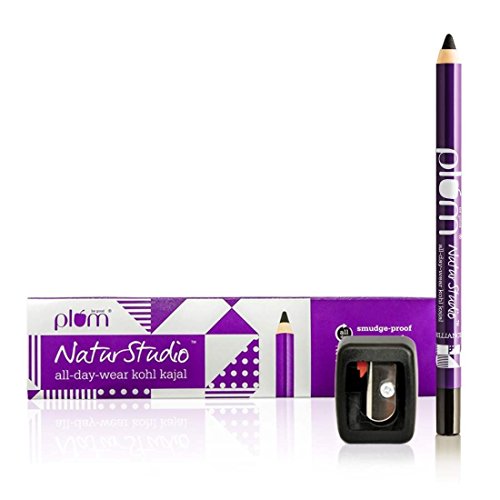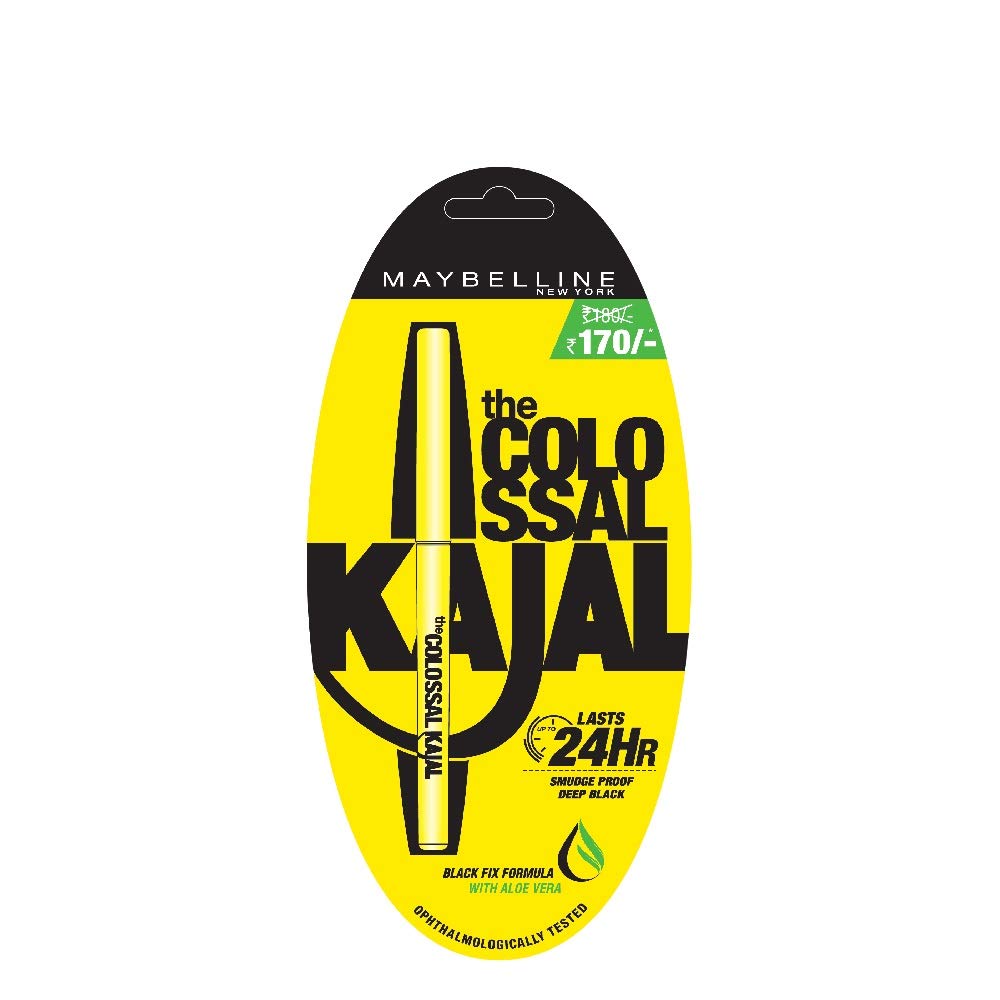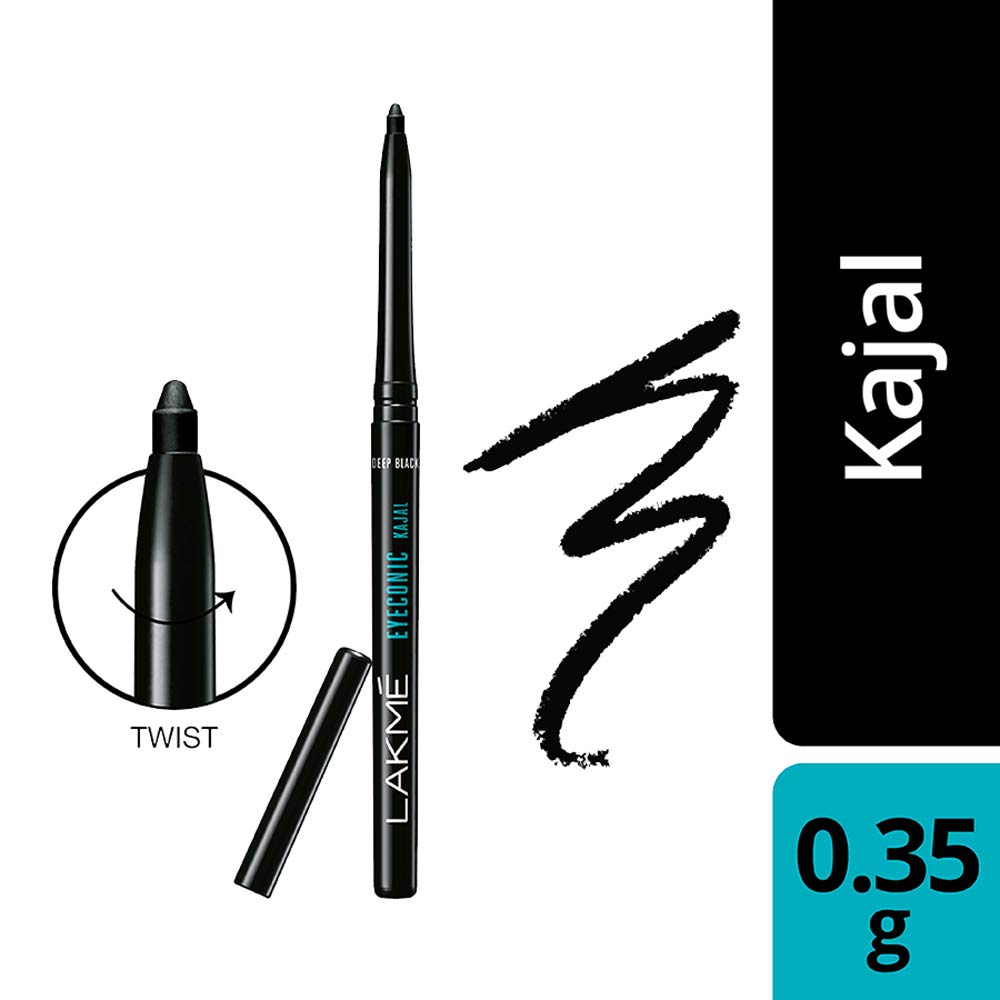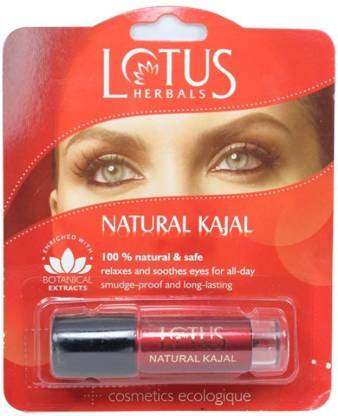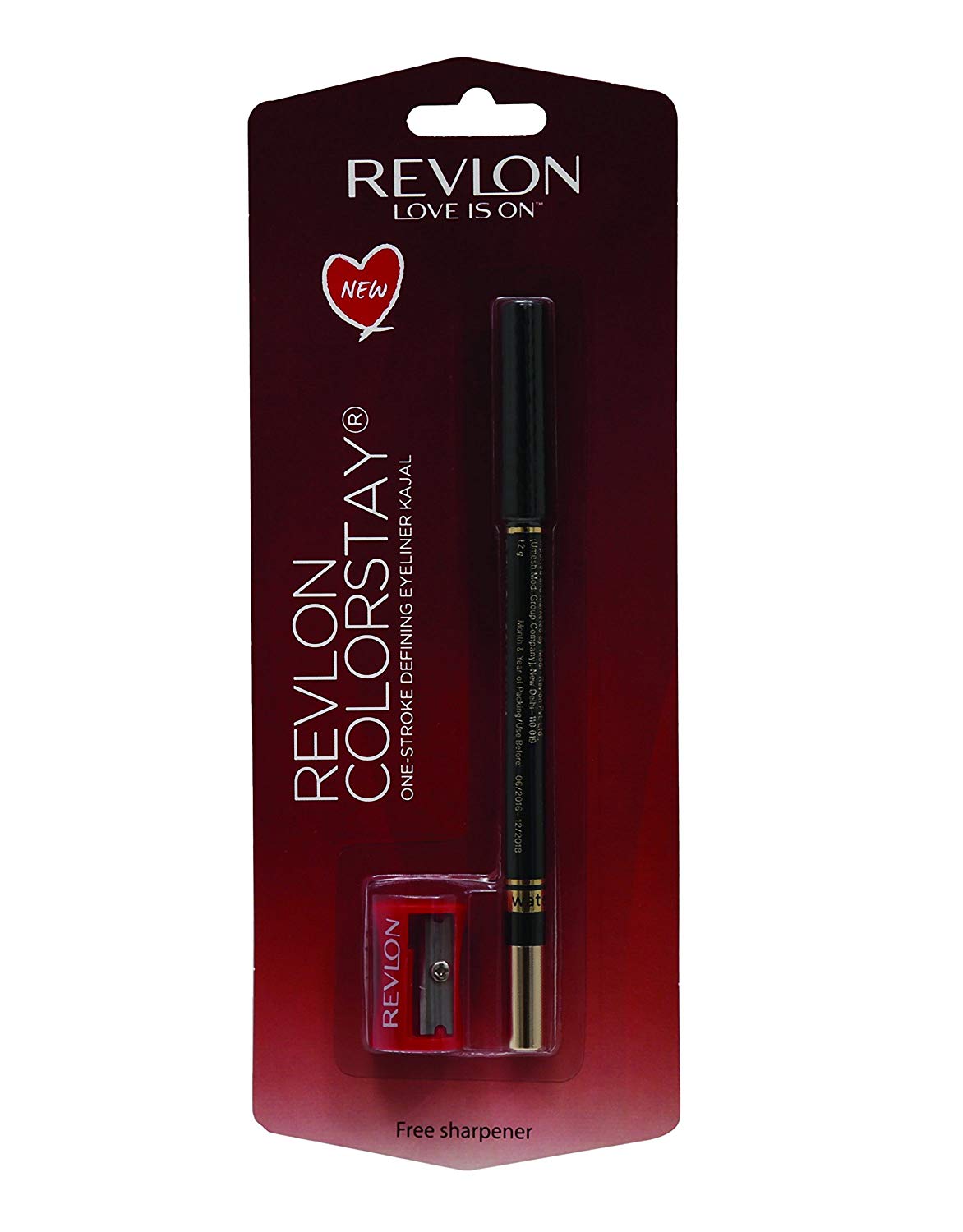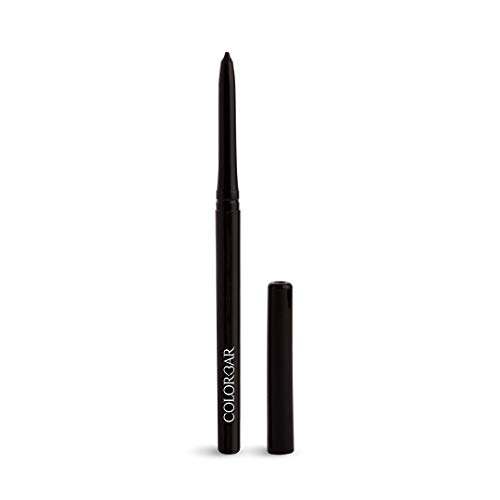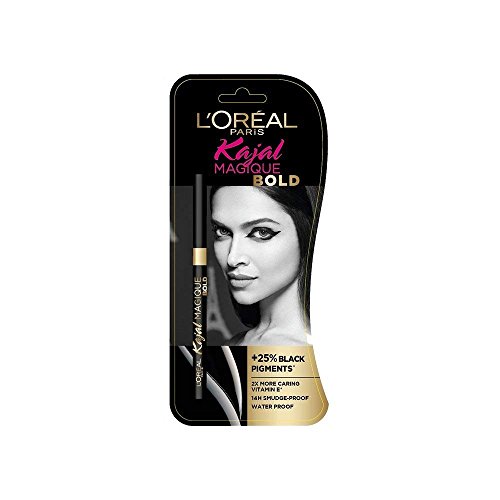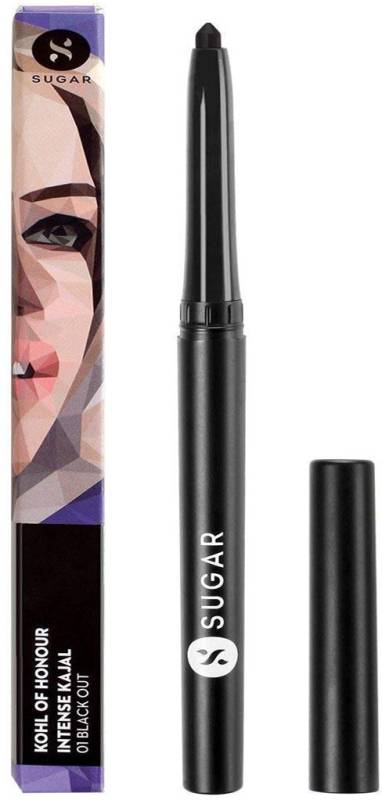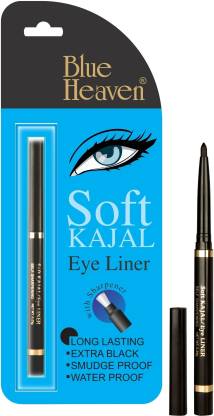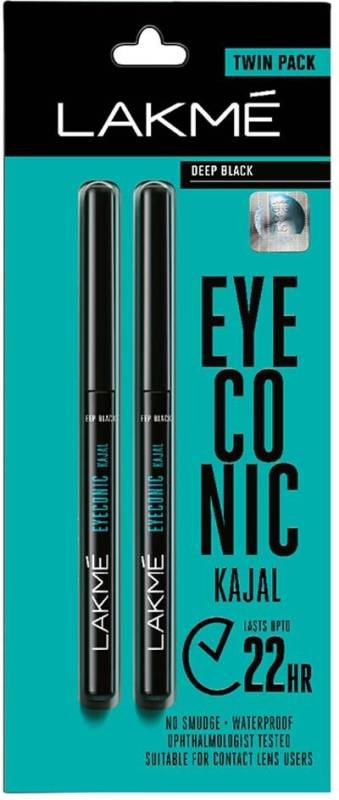Introduction
They say Eyes do the talking and what else can we think of an expressive eye that is beautifully lined with kajal or kohl? The existence of kajal has been reported since ancient times. We’ve seen images of the world’s awestruck beauty like Cleopatra whose eyes were gorgeously lined with smoked black kajal that radiated her elegance even more! This blog is going to be all about the 10 best kajal in India.
The statement of beauty since ancient times:
These days you can easily log in to your YouTube and find out how to get a perfect winged eyeliner or what type of kajal will suit you. But little did you know that kajal has always been one of the oldest natural products that have defined beauty. As early as 3100 BC, the ancient Egyptians incepted the practice of smudging a black powdery substance around their eyes. They termed it ‘Galena Eye Paint’ and did that to protect them from the sun’s harsh rays. Cleopatra’s bright blue eye shadow and deep black kohl are still not forgotten and it was a strong belief of the Egyptians that kohl around their eyes had important medicinal, magical, and religious qualities.
From classical Indian dances like Bharatnatyam, Kathakali, etc., to the Red Carpet moments at the Cannes film festival, the enigmatic presence of Kajal has been an absolute blend of elegance and class. In India, there is a spiritual connection between kajal and people as applying kajal is considered to be auspicious enough to repel evil intentions. Besides, irrespective of what it is being called ‘Surma’ in Punjabi and Urdu, ‘kanmashi’ in Malayalam, ‘kaadige in Kannada, ‘kaatuka in Telugu, or ‘kanmai’ in Tamil, it is a symbol of sheer aesthetic artistry.
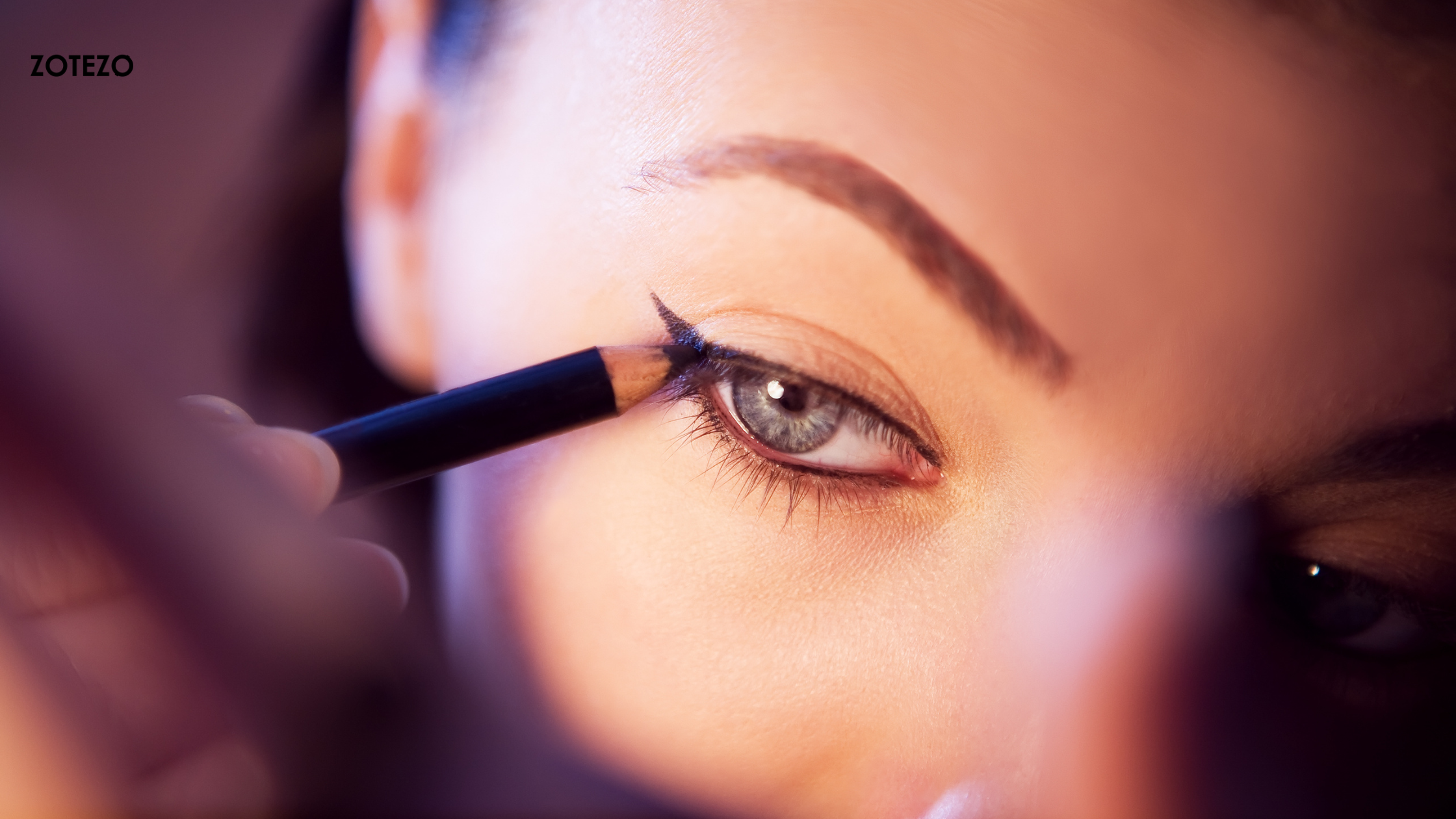
Our pick of the 10 best Kajal Pencil of 2024 in India
Zotezo Score | Best Kajal in India | Lowest Price |
|---|---|---|
|
A+ |
||
|
A |
||
|
A |
||
|
B+ |
||
|
B+ |
||
|
B+ |
||
|
B |
||
|
B |
||
|
C+ |
||
|
C+ |
Tips for choosing the right Kajal Pencil for you
Types of kajal and what should you choose:
It totally depends upon your comfort level and the type of kajal wear you want! There are plenty of options like a twisted kajal pencil, a regular pencil with a sharpener, or a gel kajal.
For regular use, a twisted kajal pencil is the best one because of its simplicity. In case you’re looking for something that will give you a smudged look you can opt for a regular kajal pencil that usually has a thicker tip. Once you apply the kajal, you can use a smudge brush or your ring finger to smudge it slowly. Some day you just want to add some drama to your eyes and we would love to guide you to achieve that goal. Use a gel kajal with an applicator that usually comes along with the kajal. If you think that the density is too thick, spray a bit of rose water on the surface of a kajal and blend it slowly and smoothly. Once the texture becomes thinner as you desired, dip the applicator and then apply it on your eyes. Let your eyes be the show’s topper!
If you’re heading towards buying a kajal, remember these points:
Before jumping off to the buyer’s guide, you should know the basic difference between a kajal pencil and an eye pencil. This is an essential topic and these are two absolutely different products. Eye pencils are the liners used to enhance the eyes and these are available in various colors to add glamour to your eyes. We don’t recommend you apply these on the waterline. On the contrary, Kajal Pencils are safe to apply to the waterline found just above your lower eyelashes. You can apply it to the waterlines both on the upper and lower eyelashes.
Having said so, let’s now see what should you be concerned about while buying a kajal or an eye pencil.
Genuine products:
This is a topmost priority because the existence of thousand of brands of kajal online makes it quite difficult to choose the correct one. There are both drugstore and high-end products that are available but at the end of the day, the buying decision is yours based on the weight of your pocket. It has been observed multiple times that kajal pencils that are too affordable contain a bit of chemical that may or may not affect your eyes. A kajal pencil that has fewer toxic chemicals will always price higher than those with a higher percentage of chemicals.
Organic products:
The presence of natural ingredients makes the product harmless for your skin and eyes being one of the most delicate parts of your body and pretty vulnerable in nature. Therefore, getting a kajal pencil or an eye pencil having natural ingredients, if not full but a major proportion, is a must! Traditional kajal formulations may include organic ingredients, and these can vary depending on the brand and the region. Here are some common organic ingredients that can be found in kajal:
- Almond oil: Almond oil is rich in vitamins and helps to moisturize the delicate skin around the eyes.
- Castor oil: Castor oil is known for its nourishing properties and can help condition eyelashes.
- Amla (Indian gooseberry) extract: Amla is a rich source of vitamin C and is believed to promote eye health.
- Triphala: Triphala is an Ayurvedic herbal blend consisting of three fruits (amla, bibhitaki, and haritaki) and is used for its nourishing properties.
- Ghee (clarified butter): Ghee is used for its moisturizing and soothing effects.
- Beeswax: Beeswax is often used as a base to give kajal a smooth texture.
- Camphor: Camphor is sometimes added for its cooling effect.
- Carbon black or lampblack: This is the primary coloring agent in kajal and is made from soot or charred plant material.
Pigmentation:
A highly pigmented kajal is stress-free because just one stroke is enough to give your eye a dazzling statement. Go for a swatch test and check how deep is the color and then try blending it with your finger. After blending if the color intensity of the kajal remains intact, grab it and straightway run to the billing counter.
Smudge-proof and water-proof:
These two features are quite significant because wearing a kajal all day long needs to remain intact. Let’s face it, removing a kajal requires a lot of time and hence, a smudge-proof and water-proof kajal that stays all day long is the best one to have. You shouldn’t be worried about your eyes when the office party starts right after you log out!
Allergy test:
This will get revealed once you do the swatch test. If you’re allergic to some ingredient that the kajal pencil of the eye pencil is having, the area will soon turn reddish and you’ll feel a bit itchy or mild burning. Reject that item and move on to the next product but before that don’t forget to apply an antiseptic lotion on that part of your skin.
Brand and Price:
Renowned brands generally do not experiment with the quality of the products they manufacture owing to their brand reputation and their customer satisfaction. Therefore, choose brands that have a handsome number of reviews and good rating stars. Read everything written on the package before buying. Try to go for a kajal that is vegan, cruelty-free with a PETA-certified leaping bunny symbol, completely organic, and has only natural products. There are multiple high-end brands that still consistently go for animal testing and also content ingredients won’t do justice to your eye in the long run. Therefore, buying an expensive kajal does not mean that you’re 100% safe. Both in the retail stores and e-commerce sites, you will come across various kajal that are not as costly as a luxe product but if the ingredients meet all your checklist items, grab it! Needless to say, the price, brand, and quality of a kajal do not always align themselves and offer you the best experience. Keep all these points in mind while buying a kajal and mark yourself safe from any red flag!
Ingredients:
Going for all-natural ingredients is always a good choice but thorough scrutiny regarding the presence of these items is important. The following items are not good for your eyes:
- Ethanolamine compounds: Ingredients with the letters DEA, TEA, and MEA have these compounds, and they’re quite often contaminated with cancer-causing chemicals called nitrosamines.
- Formaldehyde and formaldehyde-releasing preservatives: They give rise to allergic reactions and are often listed as quaternion-15, DMDM hydantoin, and urea.
- Parabens: Parabens are generally used to prevent the growth of bacteria in makeup products but their absorption into the bloodstream leads to endocrine disruptors. Besides, they cause reproductive toxicity and trigger breast cancer. Avoid anything with the suffix paraben while buying a kajal pencil or an eye pencil.
- Heavy metals: Color-pigmented eye pencils or kajal pencils contain heavy metals like Nickel and Chrome. These are neurotoxins and are directly linked with brain damage, respiratory disorders, and lung cancers.
Products listed here are carefully reviewed and tested by our expert authors and reviewers. If you buy through links on this page, we may earn a small commission. Here’s our editorial process.
How we reviewed these products
Advantages of using Kajal Pencil
Multi-functional uses
Did you know that you can use the best Kajal in India in various ways? Pot kohls & pencil kohls can be used in different sections of the eyes & face to enhance their appearance.
Eyes – Kajal is fantastic for creating signature eye looks! It is the one thing that can replace a variety of other beauty items. For example, it may be used as an eyeliner and an eyeshadow with a brush to produce a black smokey-eyed appearance.
Face – Without a beauty mark or a mole, certain makeup looks boring & ordinary. Don’t have one? Not a problem! You can use Kajal or Kohl to create beauty marks anywhere you wish. Simply place the mole-like dot wherever you want, set it with powder, and you’re done!
Eyebrows – Use the kajal to darken & draw attention to the brows. Kajal is put on an infant’s brows to sculpt & darken them. Just be gentle while applying it over the brows since heavy applications will make them seem boxy & unnatural.
Hair – Can’t pull off the sleek ponytail look due to an uneven hairline? In such cases, Kajal may be useful. To conceal the spots, use a kohl pencil to make hair-like strokes, or dab some with your fingers & smooth them using a spoolie. Not only that, but you can also utilize it to hide mildly grey hair.
Moisturizing the waterline:
The moisturizing nature of kajal primarily depends on the specific formulation and ingredients used in the product. Traditional kajal preparations in some cultures may include organic and natural ingredients that have moisturizing properties. Let’s take a closer look at how certain ingredients in kajal can contribute to its moisturizing effects:
- Almond Oil: Almond oil is a common ingredient in traditional kajal formulations. It is rich in essential fatty acids and vitamins (such as vitamin E), which help to nourish and hydrate the skin around the eyes. Almond oil can help retain moisture, preventing delicate skin from becoming dry and irritated.
- Castor Oil: Castor oil is another ingredient often found in kajal products. It is known for its emollient properties, which means it can form a protective barrier on the skin, locking in moisture and preventing water loss. Castor oil can help keep the skin around the eyes soft and supple.
- Ghee (Clarified Butter): Ghee is used in some traditional kajal formulations due to its moisturizing and soothing properties. It can help alleviate dryness and irritation around the eyes.
- Amla (Indian Gooseberry) Extract: Amla is rich in vitamin C and antioxidants, which can help promote skin health and hydration.
Embracing the culture:
The cultural value of applying kajal goes beyond its cosmetic benefits. It is deeply intertwined with the social, spiritual, and traditional fabric of these societies, making it a cherished and respected practice. The significance of kajal may vary among different cultures, but its enduring presence in these communities reflects its importance as a symbol of beauty, tradition, and cultural heritage. It is often used during prayers or religious ceremonies to promote spiritual well-being and protection.
For some cultures, especially in South Asia, wearing a kajal is considered a symbol of cultural identity and heritage. It forms a part of traditional attire and is associated with specific customs and festivals. For instance, in Indian festivals like Diwali or weddings, the use of kajal holds symbolic significance and is applied to both women and men as part of the celebrations. In various cultures, kajal is believed to bring good luck, prosperity, and blessings. It is thought to attract positive energies and protect against negative influences.
Reducing the sun glare:
The use of kajal for reducing sun glare is a traditional practice found in some cultures, especially in South Asian and Middle Eastern regions. While this belief is steeped in cultural tradition rather than scientific evidence, some people claim to experience benefits from using kajal to reduce sun glare. Here are some perceived benefits:
- Diminished Sun Glare: Some individuals believe that applying kajal around the eyes can help reduce the intensity of sunlight that enters the eyes, thereby reducing glare and making it more comfortable to be outdoors in bright conditions.
- Protective Effect: Kajal is often thought to have protective properties, and applying it to the eyes is believed to shield them from the harsh effects of direct sunlight.
- Soothing Sensation: The application of kajal might create a soothing sensation, which could help ease eye strain and discomfort caused by sun glare.
Enhancing a dramatic look:
Kajal can enhance a dramatic look by adding intensity, depth, and definition to the eyes. When applied strategically and with boldness, kajal can create a striking and captivating appearance. Here’s how Kajal contributes to a dramatic look:
- Dark and Intense Color: Kajal typically has a rich and deep black color. When applied to the waterline or lower lash line, it creates a dark contrast against the whites of the eyes, making the eyes look more prominent and intense.
- Emphasizes Eye Shape: You can apply kajal using an eye brush along the upper and lower lash lines, extending it beyond the natural eye shape to create the illusion of larger, more dramatic eyes. This elongation adds a mysterious and seductive quality to the overall look.
- Smokey Eye Effect: Do you want a smokey eye effect? You get it instantly if you know how to smudge a Kohl look. Smudging the kajal along the upper and lower lash lines with a tinge of eye shadow and blending it into the eyelid, adds depth and creates a sultry, smokey appearance.
- Defines the Eyes: Kajal is excellent for defining the eyes and enhancing their shape. It helps create a bold, dramatic frame around the eyes, drawing attention to this area and making the eyes stand out.
- Versatility: Applying kajal in various ways to achieve different dramatic looks is no big deal. Whether you prefer a classic winged eyeliner, a thick smudged line, or a smoldering smokey eye, kajal can be used to achieve a wide range of eye makeup styles.
Disdvantages of using Kajal
Whatever the brand you’re using but applying kajal in the eyes of your baby is NOT a good thing! Even if you’re using homemade kajal, try not to apply it to your baby’s eyes. If it is associated with any religious belief, just dip your finger in the homemade kajal and mark it on the skin of the baby like a small dot. Make sure that dot is quite far from the eyes of your baby.
Following are the side effects of using kajal or pencils that have toxic chemicals:
- Conjunctivitis – chemical, toxic and infective
- Allergy
- Toxicity / Chemical Reaction
- Meibomitis
- Styl & Hordeolum – infections of the glands of the eyelids
- Corneal ulcer – which can potentially lead to blindness
- Uveitis – certain chemicals in kajal can incite inflammation inside the eye
- Glaucoma – some constituents can increase eye pressure leading to glaucoma
- Dry Eye – regular use of kajal can be associated with scarring of tear / lacrimal glands causing dry eye syndrome
- Conjunctival discoloration
Who should use Kajal Pencil
Kajal, also known as kohl or eyeliner, can be used by anyone interested in enhancing the appearance of their eyes. It’s a versatile cosmetic product that can add definition, intensity, and allure to the eyes, regardless of gender or age. Whether for everyday wear or special occasions, individuals who want to accentuate their eyes and create various makeup looks can benefit from using kajal.
Recommended Dosage of Kajal
The frequency of applying kajal in a day depends on individual preferences, eye sensitivity, and the specific product used. In general, there are no strict limitations on how many times you can apply kajal in a day.
For most individuals, applying kajal once or twice a day should be sufficient to achieve the desired eye makeup look. Applying kajal in the morning should last through the day, but you can reapply if you desire a touch-up or if it has smudged due to environmental factors or natural eye moisture. Always be gentle when applying and removing kajal to avoid causing any unnecessary stress on the delicate skin around the eyes. If you wear kajal frequently, make sure to choose a product with natural and non-irritating ingredients, and if you experience any discomfort, consult with an eye care professional for guidance.
However, it’s essential to consider a few factors to ensure the safety and comfort of your eyes:
Eye Sensitivity:
Some individuals may have sensitive eyes, and excessive or frequent application of kajal could lead to irritation or discomfort. If you experience any redness, itching, or irritation, it’s best to reduce the frequency of application or discontinue use temporarily.
Quality of Kajal:
The quality of the Kajal product matters. High-quality kajal made from safe and non-irritating ingredients is generally more suitable for frequent use.
Removing Kajal:
Before reapplying kajal, it’s essential to remove any residue or makeup that might have accumulated around the eyes. Use a gentle makeup remover to clean the area thoroughly.
Eye Health:
Regularly washing your face and eyes, especially before bedtime, helps maintain eye hygiene and reduces the risk of eye infections.
Overuse:
Excessive application of kajal might lead to a build-up of product on the waterline, potentially obstructing the Meibomian glands, which can contribute to dry eyes.
How to use Kajal
Using kajal in makeup is a simple yet effective way to define and enhance your eyes. Here’s a step-by-step guide on how to use kajal in your makeup routine:
Step 1: Prepare Your Eyes
Start with clean and moisturized eyelids and under-eye areas. If you prefer to apply eyeshadow, do it before using Kajal. A neutral base or eyeshadow primer can help the kajal adhere better and stay in place.
Step 2: Choose the Right Kajal
Select a good quality kajal that suits your preferences and eye sensitivity. Look for a smooth and creamy texture that glides easily without tugging the skin.
Step 3: Applying Kajal to the Upper Lid
Hold the Kajal pencil at a slight angle and gently draw a line along your upper lash line, starting from the inner corner and moving outward. You can make the line as thin or thick as you like, depending on the intensity you desire.
Step 4: Applying Kajal to the Lower Lid
If you want to line your lower lash line, gently pull down on your lower eyelid to expose the waterline. Apply the kajal to the waterline, moving from the inner corner to the outer corner. This step adds definition and drama to the eyes.
Step 5: Tightlining
For a more intense and defined look, you can also tight-line your upper waterline. To do this, lift your upper eyelid gently and apply the kajal to the waterline underneath the upper lashes. This technique makes the lashes appear fuller and enhances the overall eye makeup.
Step 6: Smudging (Optional)
If you want a smokey eye or a softer look, use a smudging brush or a cotton swab to smudge the kajal along the lash lines and blend it slightly upwards towards the eyelid. This creates a more diffused and blended effect.
Step 7: Finishing Touches
After applying the kajal, you can complete your eye makeup with mascara to add volume and length to your lashes. Curling your lashes before applying mascara can make your eyes look more open and bright.
Step 8: Set the Look (Optional)
If you have oily eyelids or want to ensure the kajal stays in place throughout the day, you can set it with a similar-colored eyeshadow or a translucent powder. You can add a single stroke of eyeliner to make the corner of your eyes look bold.
Step 9: Clean Up Edges
If you make any mistakes or want to sharpen the edges, use a cotton swab dipped in makeup remover to clean up the lines around the eyes.
Understand the who, what & why behind your favourite products
Brand Values | Product Philosophy | Product USPs
Read brand stories, their raison-d'etre, and understand what drives them to caringly create the highest quality products for your well-being.
Brand stories
Frequently asked questions on Kajal Pencil
1. Can I use kajal to make my eyes look bigger?
2. Is kajal safe to use during pregnancy?
3. Can I use kajal on my lower lash line?
4. How can I achieve a smokey eye look with kajal?
5. How do I remove kajal at the end of the day?
6. Does kajal have any therapeutic or medicinal properties?
7. Are there different colors of kajal available?
8. Can I make my own kajal at home?
9. Is kajal the same as eyeliner?
10. Can kajal be used as an eyeshadow base?
Expert reviews you can rely upon
Expert Insights | Product Reviews | Connect with Experts
Gain valuable insights and read unbiased product reviews by subject matter Experts on Zotezo, the ultimate trust commerce platform, that empowers millions globally to make informed decisions for their wellbeing.
Expert Advisory
Conclusion
Adding some charisma to the eyes has always been our favorite and we can’t help it when our eyes dazzle brightly! Choosing the right kajal or eye pencil to amplify the expression of the eyes is one of the crucial decisions. Grabbing an all-in-one kajal pencil is like hitting the jackpot and this blog is definitely going to clear tons of your confusion!
Did you like this article? Then share it with your friends and family. Did we miss out on anything? Do let us know in the comments section below. Also, do not forget to mention your pick of the best kajal in India.

